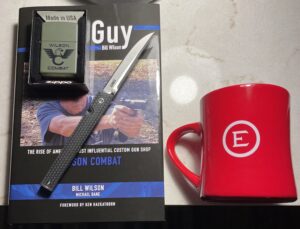L.Q. Jones. Beyond “The Wild Bunch” and other Peckinpah films, credits include writing, producing, and directing “A Boy and His Dog”, based on the Harlan Ellison novella.
Adam Wade. Other credits include “B.J. and the Bear”, “The Misadventures of Sheriff Lobo”, and “Come Back Charleston Blue”.
Tony Sirico. THR. Other credits include “Goodfellas”, “Police Squad!” (“In Color!”), and “Jersey Shore Shark Attack”.
Lenny Von Dohlen. “Tender Mercies” is a swell movie, and you should watch it if you haven’t. Other credits include “The Equalizer”, “Walker, Texas Ranger”, and multiple appearances on “The Pretender”.
Susie Steiner. This is kind of sad. She was a British novelist who broke out in 2016 with a crime novel, “Missing, Presumed” that got a lot of attention.
Around that time, she was diagnosed with retinitis pigmentosa and gradually went legally blind. She wrote two more novels, “Persons Unknown” and “Remain Silent” in the same series as “Missing, Presumed” (featuring Manon Bradshaw). In 2019, she was diagnosed with “glioblastoma, grade 4”, which eventually killed her.
Bill J. Allen. I hadn’t heard of him, but I wanted to highlight the obit because I find it interesting.
Mr. Allen was an Alaskan businessman.
As the president and chief executive of the Veco Corporation, an engineering and services company he co-founded in 1968, Mr. Allen sat at the intersection of Alaska’s vast oil industry and the equally vast political interests arrayed around it.
He specialized in greasing the connections between the two, shuffling money into the coffers of friendly politicians, who in turn kept companies like Veco flush with work. By the early 2000s, Veco was the largest Alaska-owned and Alaska-based company, with 3,500 employees, 18 subsidiaries and $400 million in annual revenue.
He allegedly threw around a lot of money to get his way.
Eventually he and one of his vice presidents, Rick Smith, settled into an almost comically corrupt arrangement with a coterie of state politicians.They regularly booked a suite at the Westmark Baranof, a luxury Art Deco hotel four blocks from the State Capitol in Juneau, where they dished out money and told their visitors what they wanted in return.
Mr. Allen and his circle seemed to revel in their shamelessness. He and Mr. Smith always booked Suite 604, and Mr. Allen always sat in the same chair. He bragged that he kept $100 bills in his front pocket, the easier to dole them out to friendly politicians. The girlfriend of one politician even had hats embroidered with the letters CBC, for “Corrupt Bastards Club.”
The Feds wiretapped the room and eventually came down on them. Mr. Allen was also alleged to have sexually assaulted underage girls, though as far as I can tell he was never charged with any criminal offense related to this.
Mr. Allen became the government’s key witness in a string of corruption and bribery cases against state and federal politicians, several of whom were convicted.
The most prominent of them, Senator Ted Stevens, was indicted in 2008 on charges that he had failed to register a series of gifts from Mr. Allen, notably an extensive renovation of the senator’s home south of Anchorage.
The two had been friends — they even owned a racehorse together — but that didn’t prevent Mr. Allen from providing critical testimony against the senator, telling the jury that Mr. Stevens had used an intermediary to ask him not to send a bill for the renovation.
As you may know, Bob, Senator Stevens was convicted and lost his re-election bid. As you may also know, Bob, three months after he was convicted, it came out that the government had witheld potentially exculpatory evidence (“including an interview in which Mr. Allen said he had never spoken with Mr. Stevens’s intermediary“) from Mr. Stevens’s defense team, the charges were dropped, and Mr. Stevens was killed in a plane crash in 2010.
